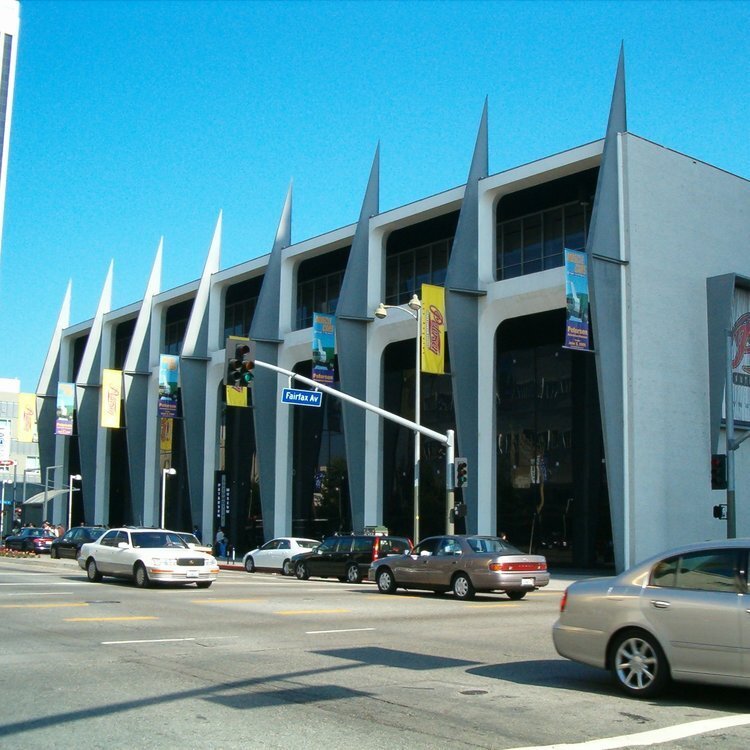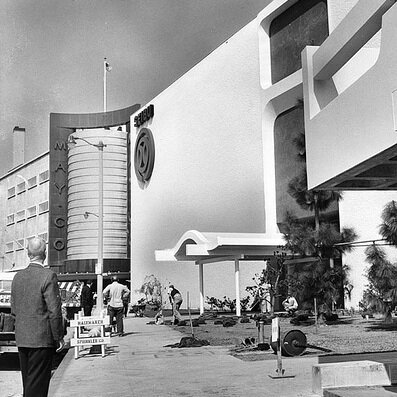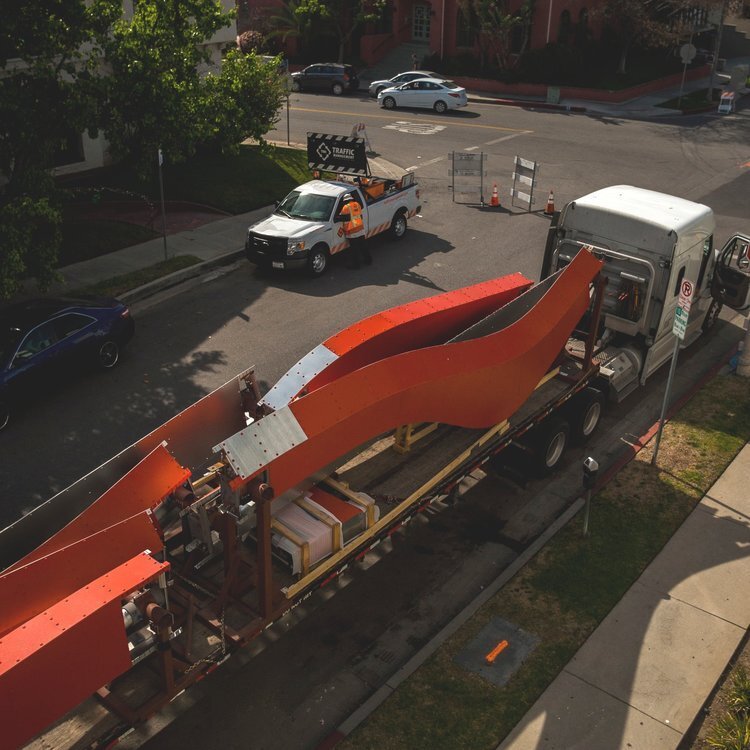History of 6060 Wilshire Blvd
Originally published Feb 1, 2021.
From a high-end Japanese department store to an even higher-end American department store to an abandoned building to an automotive museum. 6060 Wilshire Blvd. has been through 5 iterations in its 50-year history, teaching us that change and forward movement is constant and necessary.
Welton Becket’s Japanese Department Store
The first iteration of 6060 Wilshire Blvd was Seibu Department Store. Seibu was a luxury retailer that sold high-end Japanese amenities. The building was designed by Los Angeles architect, Welton Becket who is also credited for designing other Los Angeles Landmarks, such as the Capitol Records building, the LAPD Headquarters Parker Center, the Beverly Hilton Hotel, the downtown Music Center Plaza, and many more.
Becket got his inspiration for the Seibu department store from their home country of Japan. Using traditional Japanese elements, such as the sloping style roof awnings and plain exterior walls with minimalist features, Becket captured the classic modernism that Japanese architecture modeled itself after. Likewise, the pagoda style rooftop restaurant with floor to ceiling windows, a reflecting pool, and having globe lanterns ensure that visitors had a chance to experience the Japanese culture every time they visited.
Despite the automotive minded design and the luxury goods, shoppers did not visit Seibu. After three years, Seibu Department Store Closed. In its place rose Orbachs, another luxury department store. Orbachs operated from 1965 to 1986 when the company went out of business. With the closure of Orbachs, 6060 Wilshire Blvd went vacant.
Ten years after Orbach's closing, the building on the corner of Wilshire and Fairfax caught the eye of publishing magnate Robert E Petersen. Petersen was a car aficionado and had been around the Los Angeles area for most of his career. Not far from his publishing company stood the Natural History Museum of Los Angeles County. The museum had in its collection several unique vehicles, all significant to historic Southern California. The vehicles would occasionally be displayed, but most were locked away in the museum's storage buildings. Always wanting to open an automotive museum, Petersen decided that the Natural History Museum would offer a great partnership, and when looking for a place to house this collection, Petersen didn’t have to look far. Robert E Petersen saw potential in the abandoned Orbachs at 6060 Wilshire and decided it would become the home to his new automobile museum. Petersen called in the Russell Group to refurbish the, now, museum.
The Russell group turned to Googie architecture for inspiration for the new museum. Googie architecture is best described as The Car meets the Space Age. This style of architecture was best characterized by sharp angles, rocket fins, starbursts, and bright colors. The 1994 refurbishment tied together the existing clean modernism of the old Japanese architecture with the new sharp fins of the Googie style architecture, bringing to light the new Petersen Automotive Museum.
Petersen Gets a New Look
The Petersen Automotive Museum opened its doors on June 11, 1994, in partnership with the Natural History Museum of Los Angeles. With a new exterior and streetscape exhibits, the Petersen was an instant hit. Visitor flocked to the museum in hoards to see the amazing collection of vehicles. People from all walks of life and all corners of the world converged on the corner of Wilshire and Fairfax.
Exactly 20 years later, the building on the corner of Wilshire and Fairfax closed its doors for yet another renovation. The firm put in charge of the massive renovation was Kohn, Pedersen, and Fox.
Much like the Russell group, KPF architects turned to the car when looking for inspiration. The building and its history would become the chassis upon which their new body would sit atop. The main inspiration for the new exterior was the movement of a car, specifically the airflow over the body of the car. KPF decided that the new building would reflect the movement of air over the body of a moving car. The building on the corner of Wilshire and Fairfax now represented a car in a wind tunnel; a car moving forward.
Concepts solidified, KPF went to work drawing blueprints and floor plans. The fins of the Googie style architecture were removed and replaced with 308 individual silver “ribbons” made out of stainless steel. Each one made individually, no two the same. The “ribbons” were affixed to the sides of the building and up of the top. On December 7, 2015, the new Petersen Automotive Museum reopened its doors to the public.













